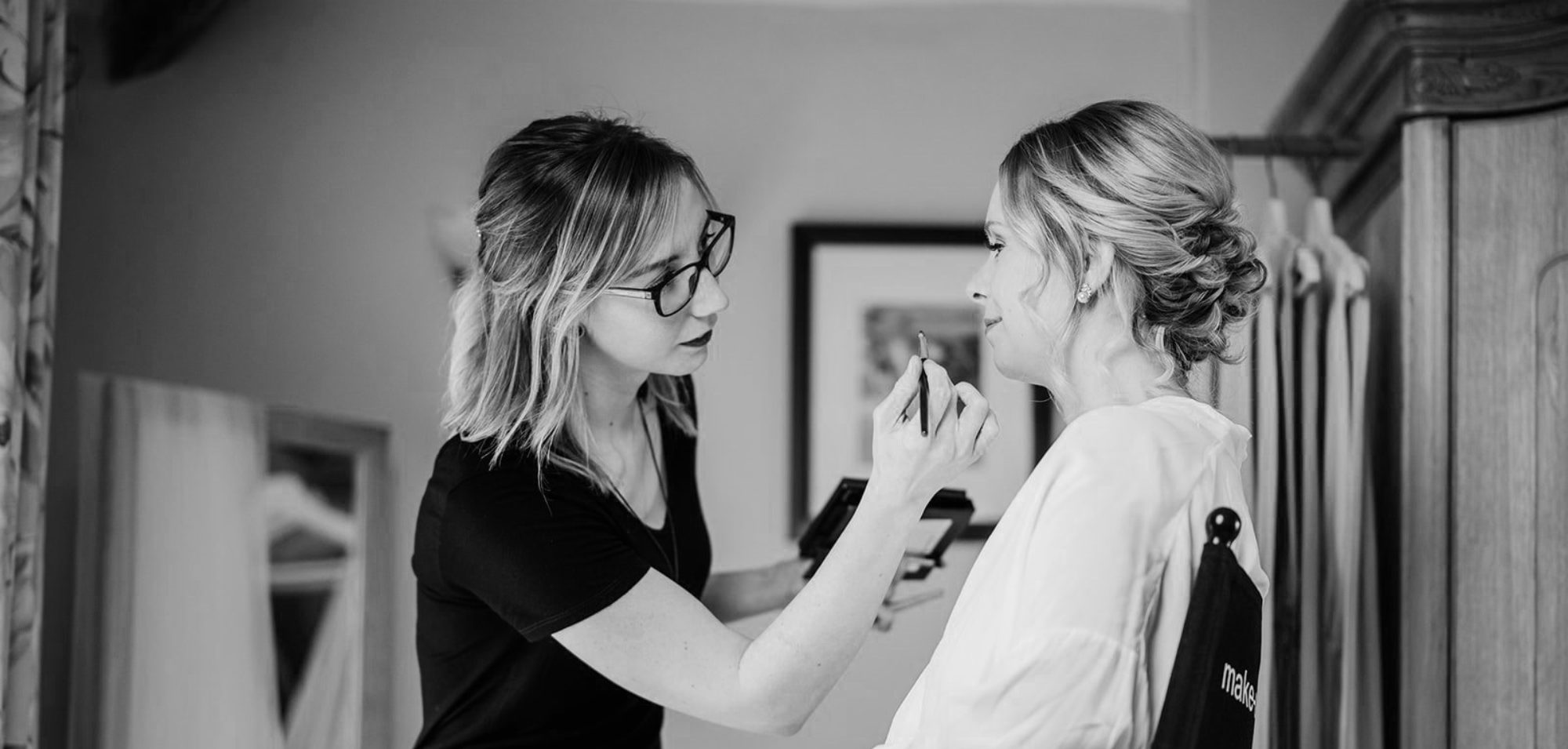1920AD – 1929AD

After the First World War, make-up helped women recover from the horrors. They were a lot more liberated and it was now acceptable to buy and apply make-up in public. It was deemed irresponsible to not look after ones complexion and hair.
Skincare:
Skincare products on offer were those to remove wrinkles, build tissue, and bleach skin to remove freckles and blemishes.
Make-up:

The rise of the film star helped cosmetic companies sell more products; famous actresses were used to promote make-up. Max Factor started calling cosmetics ‘make-up’, as in to “make-up ones face”.
It was still highly popular to be pale, although in 1928, the tan became fashion when Coco Channel “fell asleep in the sun” and gained a tanned complexion. This bought on companies selling tanning products.
Cold cream was used, and then face powder would be applied with a powder puff or chamois and rubbed in to form a base.
Rouge was applied in circular motions on the cheeks, under the eyebrows, sometimes under the eyes to cover dark circles, tips of the ears and even sometimes flappers would rouge their knees! It came in liquid, cream paste and dry powder, common shades were berry and rose, by 1925, orange was the most popular.
Dainty, dolly-like lips were the ‘in’ thing, with a strong cupid’s bow, drawing slightly over the lip line just in the centre of the mouth. Full lips were not appropriate and considered ‘vulgar’. Lip pomade came in little pots and could be used on cheeks too, though in 1915, the push up tube was invented and came in metal cases. There were cherry-flavours and smudge-proof lip colours too. Lip pencils were also available for outlining the lips; some would even subtly colour in their ear lobes and outline their nostrils.
In 1922, Tutankhamen’s tomb was discovered and the Egyptian art influenced eye make-up. An evening look, especially for the Flapper girls would be a dark smokey eye. Eyeliner was a kohl pencil made from soot, lead and goose grease, it was applied all around the eye and smudged outwards, to create a circular shape, and faded up towards to brow. Eye shadow came in basic colours, grey, brown, black and plum, though for the daytime it wasn’t worn much, or it was very muted.
Mascara was made from coloured wax that was melted and applied to lashes with a stick. False eyelashes were invented in 1911 and were now popular. The eyelash curler was invented by ‘Kurlash’ in 1923, it was expensive, but a big success.
It was popular to pluck eyebrows like the film stars, very thin and drawn on long, sometimes straight across and some drew theirs downwards to create a more of a doe-eyed look. The brow pencils came in brown or black and could be used as eyeliners too. However, some women left their eyebrows in a more natural shape and would use Vaseline to condition them.
Hair:

Some women kept their hair long and wore it up in a ‘faux bob’, which was a low bun or chignon at the nape of the neck with the sides in waves. In the evenings, hair was worn up and protruding, similar to Greek goddesses, with the use of false hair pieces if they didn’t have enough hair of their own. In 1924, when women started to cut off their long hair; it was an outrage with the older generation. Female hair salons were not yet invented, so women would either go to a barber (who had to quickly learn new techniques on how to cut women’s hair), or do a D.I.Y. hair cut or get a friend to attempt to do it for them. By the end of the 20’s the women’s only salon industry exploded onto the scene!
There were a range of bobs to choose from, ‘orchid bob’, ‘coconut bob’, ‘Egyptian bob’, ‘Charleston cut’, ‘shingle’… They were all mainly earlobe length with a deep side parting. To start with, bobs were big, frizzy and messy, though by the mid-twenties they became more sculpted and smooth. Some ladies would style the hair around their face into ‘spit curls’, a.k.a. ‘kiss curls’, which were curled up on their forehead and cheeks.
Curling irons had wooden handles and were heated over coals or a gas flame. Electric models of the Marcel irons came about in the mid-1920’s, making it safer to do hair at home. The permanent wave machine was a new invention and made tight curls, though meant ladies would have to make a trip to the salon regularly to keep their hair neat.
People that preferred straight hair were just as fashionable and would have fringes either cut straight across, covering the eyebrows, or a heart shaped or v-shaped fringe. The sides of the fringes would rest on their cheekbones.

NEXT: 1930’s
BACK: Early 1900’s

